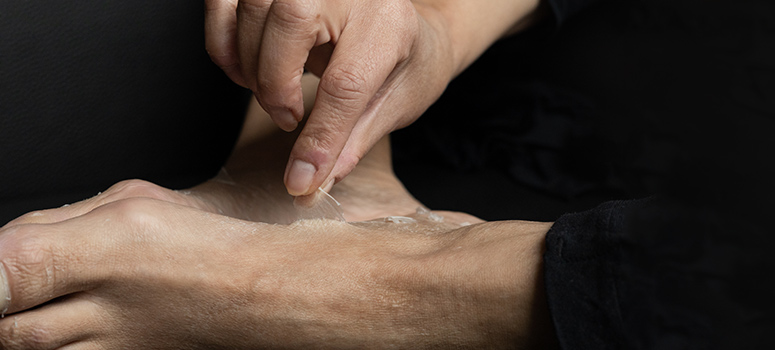Diabetes can be tough to deal with as it affects all the organs in your body, including the largest organ, your skin. Hence, taking care of your skin becomes more important if you have diabetes. Skin infections are common complications in diabetic patients, affecting 20-50% annually. This condition is more common in people with type 2 diabetes and poor metabolic control.
Some skin conditions that are normal for healthy people can become serious for a diabetic person in no time. With proper preventive measures preventing them is easy. Learn more about the connection between diabetes and fungal infections in this blog.
Why are diabetic patients more prone to fungal skin infections?
Diabetic patients have high glucose levels, making the skin dry and creating an ideal environment for harmful bacteria to thrive. This increases the risk of skin infections. Also, diabetic people have low immunity, which makes it difficult for the antibodies to fight against pathogens leading to an increased risk of skin infections.
It is recommended for diabetic patients to keep an eye on changing skin appearance and minor cuts and wounds as they can become severe in no time. Therefore it is better to highlight any skin issues to your doctor in time as prolonged skin infections can also result in amputation of the infected area.
What are the different skin fungal infections seen in diabetic patients?
No one type of skin infection affects more. A diabetic person is at risk of different skin fungal infections such as bacterial infection, fungal infection and itching, to name a few.
-
-
Bacterial infection
-
Diabetic patients suffer from bacterial infections like styes, boils, folliculitis, carbuncles, and infections around the nail. Thanks to medical advancements that have made these infections treatable. Today, many antibiotics and treatment methods have helped keep blood sugar levels in control and the risk of bacterial infections at bay.
But in some cases, bacterial infections tend to go out of control. So, to be on the safer side, dermatologists recommend following a good skincare routine to prevent such skin infections.
-
-
Fungal infections
-
Diabetic fungal infections are caused due to Candida Albicans, a yeast-like fungus. This fungus creates itchy rashes, red patches on the skin, and blisters. This type of skin infection occurs where the skin folds. Arm folds, armpits, under the breasts, and around the nails are some of the common areas where fungal infections are likely to occur. I am running a few minutes late; my previous meeting is running over.
The most common fungal infections in diabetes are athlete’s foot, jock itch, ringworm, and vaginal infections. These are treatable using topical and oral antifungals but cause discomfort. It is always better to consult a dermatologist if you notice a rash, blister, or red patch on your skin before it goes out of control.
-
-
Itching
-
Diabetic patients often experience localised itching. It is caused by a yeast infection, dry skin, or poor blood circulation. Why is itching a big deal? Itching can cause cuts on your skin, making way for pathogens to enter your skin and make it worse. Dermatologists recommend that diabetic people reduce bathing time and frequency, especially when there is low humidity. Frequent bathing can make the skin dry and make skin more sensitive.
How can you prevent skin infections?
A little care goes a long way. Living with diabetes is challenging and requires you to care more for yourself. So, here are a few tips that help prevent skin infections and keep you in good health.
- Keep your blood sugar levels in control as people with high glucose levels tend to have dry skin that increases the risk of skin infections.
- Always keep your skin clean and dry. Apply a light moisturiser to prevent excess dryness.
- Avoid a hot bath as it strips away moisture from your skin and makes it dry. Use moisturising soaps and clean your body thoroughly after bathing.
- Do not leave minor cuts or wounds unattended. Treat them immediately to prevent harmful bacteria from entering your skin and causing an infection.
- Do not use harsh soaps or shampoos. They do nothing but harm your skin, especially if you are a diabetic patient.
- Consult a dermatologist if the skin infections are not getting better despite trying OTC antifungals.
- Check your shoes before putting them on. Little moisture can lead to a significant skin infection in no time.
These skin care tips are little things you can do to save yourself from skin infections. However, it is highly recommended not to waste time waiting for the skin infection to heal.
When in doubt, ask an expert!
There are many myths surrounding skin infection in diabetic patients. But heeding them won’t do any good. Therefore it is always recommended to ask an expert. If you are looking for an expert dermatologist near you, Skin and Hair Academy is the right place to find one. Connect with expert dermatologists from all over the country with just one click.














